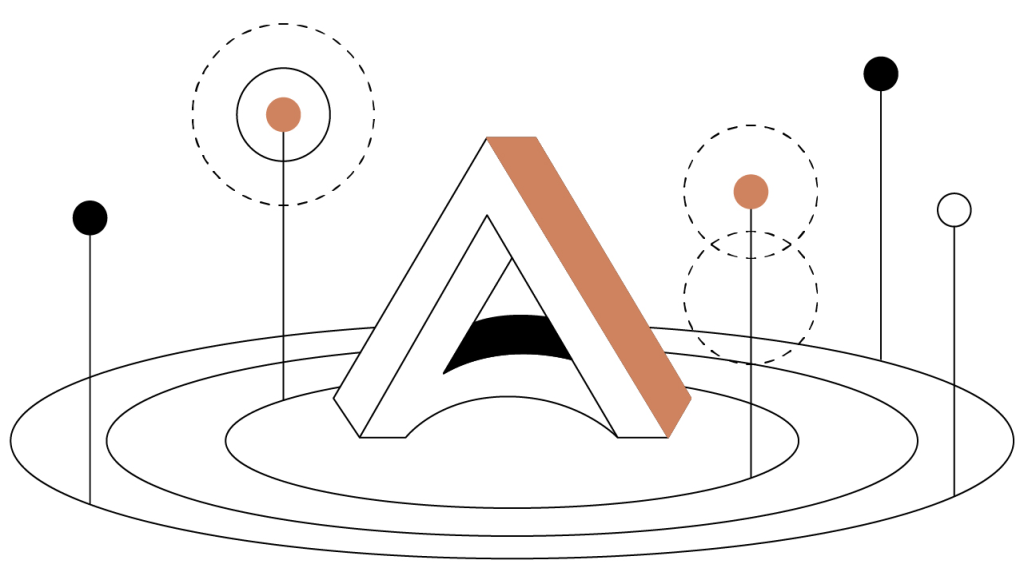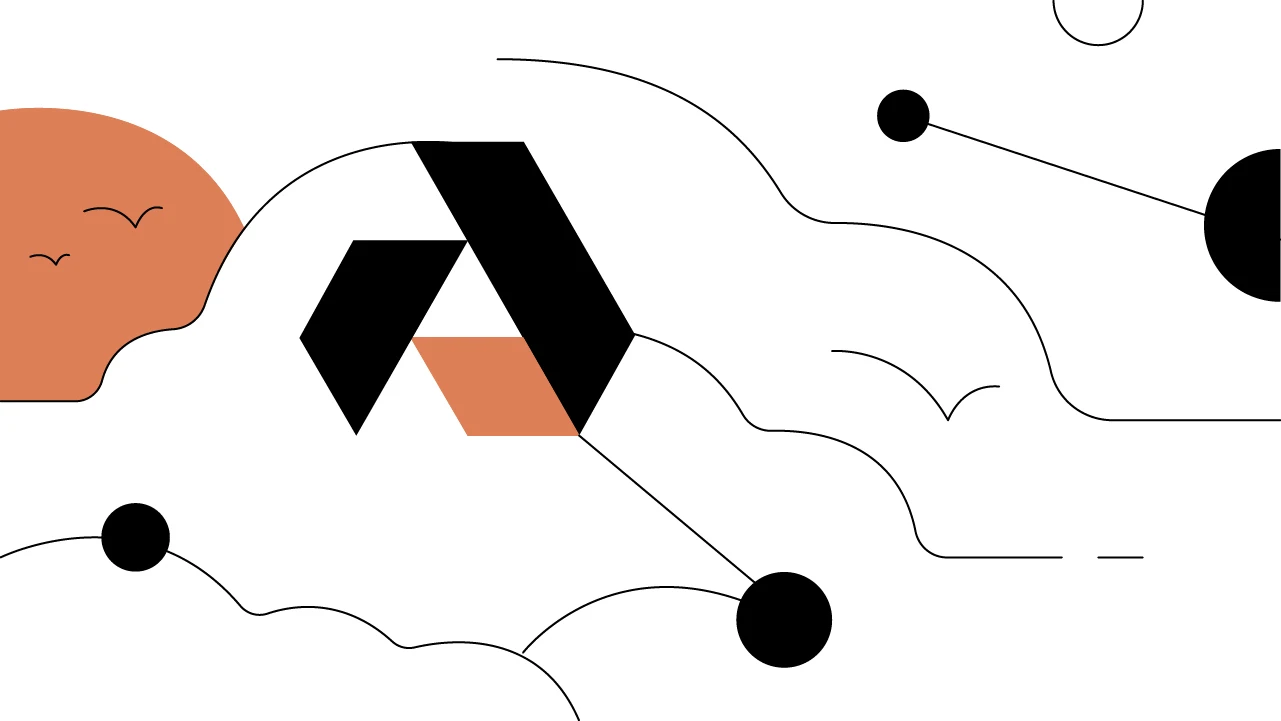Contents
Acala Network (ACA): Polkadot’s DeFi Powerhouse
Bringing lending, borrowing, and extensive stablecoin functionality to the Polkadot ecosystem.
Updated February 12, 2025 • 4 min read

Summary
Acala Network is a foundational player for decentralized finance (DeFi) in the Polkadot ecosystem. The protocol offers various DeFi products and services — including lending, borrowing, and staking — that provide Polkadot’s user experience, minimized gas fees, and overall scalability features. These financial applications make use of two main protocols: Homa and Honzon. Homa is a tokenized staking liquidity protocol, and Honzon is a cross-chain stablecoin protocol. Acala has also designed its own automated market maker (AMM) decentralized exchange (DEX) and decentralized governance structure that relies on a native governance and utility asset, ACA token.
Acala Network Brings a DeFi Platform to Polkadot
Acala Network is a decentralized finance (DeFi) platform built for the Polkadot ecosystem. It is built to host an array of financial applications that make use of smart contract technology, interoperable cross-chain functionality, and robust security protocols. Acala is also Ethereum-compatible, meaning its applications can maintain interoperability between Polkadot and Ethereum. Like many of the independent blockchains built on the Polkadot-specific Substrate blockchain development framework, Acala Network functions as a parachain on the Polkadot Relay Chain.
Acala Network offers a suite of financial products, including:
A multi-collateralized stablecoin (aUSD), backed by cryptographic assets via the Honzon protocol.
A trustless staking derivative (L-DOT) via its Homa tokenized staking liquidity protocol.
An automated market maker (AMM) decentralized exchange (DEX).
All three of these employ micro gas fees that can be paid using a variety of crypto assets. Acala offers users access to these services via its Acala Mandala testnet, and will eventually move onto a live mainnet iteration of the Acala Network when the platform’s Polkadot parachain is fully realized.
Acala Network has built its own Ethereum-compatible virtual machine (VM)— the Acala EVM — to assist developers in building decentralized applications (dApps) written in the Ethereum-specific smart contract coding language Solidity, and to mint assets that operate similarly to ERC-20 tokens. This asset-minting functionality is a key aspect of Acala’s interoperability framework, and Acala’s mintable assets include cross-chain assets like DOT, renBTC, and Acala’s native tokens, ACA and aUSD. Transactions that take place within the Acala EVM are converted into Substrate transactions that can be signed via Polkadot extensions, which are then converted into an Ethereum-readable format.
The Goals and Values of the Acala Network
The Acala Network is built to fulfill several goals. The first of these is creating a sound, stable, decentralized digital currency (aUSD) built for borderless value transfer inside the Polkadot ecosystem. Additionally, Acala Network intends to accommodate a highly secure and interoperable stablecoin network. The stablecoin functionality is intended to serve the wider goal of providing Polkadot with a building block for open financial services and an intrinsic DeFi ecosystem that can connect to Ethereum’s own established DeFi ecosystem (and beyond) via cross-chain asset collateralization.
In line with the above goals, Acala Network is built to maintain robust security by harnessing Polkadot’s shared security mechanism. This architecture is paired with a commitment to foster decentralization and censorship resistance via the ecosystem’s consortium framework and token release model. Lastly, Acala is focused on equitable governance and enhanced upgradability, leveraging governance via its Acala token (ACA), which employs forkless, non-disruptive upgrades.
Acala Network’s ACA Token Uses
ACA is the native asset of the Acala Network, and facilitates several uses and governance mechanisms within the broader Acala ecosystem. ACA can be used to pay network transaction fees, stability fees as interest on aUSD loans when using Honzon, and penalty fees during liquidation. These various platform fees can also be paid by the user in aUSD, which is subsequently exchanged to ACA under the hood via the protocol’s built-in exchange feature. After ACA is received as payment for platform fees, it is burned and permanently removed from the token supply, making the asset deflationary. ACA is also burned during liquidations on the platform.
ACA is also slated to take on an increasingly important role in platform governance as Acala plans to implement a gradual, multi-phase decentralization approach that will shift from on-chain centralized councils via the Acala Foundation to a more decentralized form of referendum-based governance via ACA token holders. ACA is used for proposing network amendments, potential risk parameter adjustments, and even as a contingency solution in the result of a sudden price collapse of assets in under-collateralized collateralized debt positions (CDPs). If such a collapse were to occur, ACA assets would be automatically diluted and sold on the market to help achieve network recapitalization.
The Honzon Stablecoin Protocol
The Honzon stablecoin protocol makes use of the Acala Network dollar (aUSD), which is pegged at a 1:1 ratio to the U.S. dollar. The peg is achieved via supply and demand balancing, an automatic risk management algorithm, community governance, and various incentives that make up the core of Honzon. The protocol is inspired by MakerDAO, which achieved notoriety with its collateralized debt positions as an Ethereum DeFi pioneer. When a user deposits crypto assets — such as polkadot (DOT), bitcoin (BTC), ether (ETH), or others — they open a CDP. The collateralized debt position process works as follows:
Depositing Collateral: The user deposits their crypto into the protocol (only one asset type can be collateralized to create a new CDP at a time). This asset is locked as collateral within a CDP.
Opening the CDP and Borrowing aUSD: The user then borrows a specific amount of aUSD that cannot exceed the total value of the amount of crypto they initially deposited into the CDP. The collateral cannot be removed until the loan is paid back in aUSD.
Repaying the aUSD: When the user closes their CDP, they must deposit the required amount of aUSD to pay back the outstanding balance owed and pay a small stability fee (in the form of either ACA or aUSD).
Closing the CDP: Once the protocol successfully receives the stability fee and the outstanding aUSD, the depositor can then retrieve their collateral back and the CDP is closed.
The Honzon protocol is made up of a CDP engine that acts as an comprehensive risk manager, emergency shutdown system, and liquidator. The CDP engine manages user position risks by taking into account the protocol’s collateralization and liquidation ratios. Honzon also utilizes an oracle for real-time price feed data via Chainlink, and a currency vault that holds different types of user assets such as aUSD, ACA, and collateralized assets like BTC, ETH, and DOT. The currency vault is connected externally to the Acala DEX and to other blockchain networks — such as Polkadot, Ethereum, and Bitcoin — via bridges.
Stablecoins that run on the Acala Network (such as aUSD) are designed to be 100% transferable to all blockchains within the Polkadot network once Acala is selected to become a parachain via the parachain slot election process. Acala’s parachain election is slated to boost aUSD’s liquidity and adoption within the Polkadot ecosystem, and may also allow the asset to be used on external blockchain networks in the future.
The Homa Protocol, Kurura, and the Future of Acala Network
The Acala Network is a many-pronged ecosystem of products and services. For example, its Homa Protocol was designed to help solve the widespread illiquidity of tokenized staked assets. It is built specifically to tokenize assets staked on Acala by creating corresponding L-Assets that can be leveraged not only as investments and but also for use in other DeFi applications, similar to liquidity farming practices in the Ethereum DeFi ecosystem. Meanwhile, another iteration of the Acala Network, dubbed Karura Network, is designed to become the DeFi hub of Kusama — which itself is a parallel version of the Polkadot network built and optimized for experimentation.
Though Acala Network is still in its testnet development phase as of July 2021, the platform is the subject of significant attention in the Polkadot ecosystem, and is expected to fully launch on mainnet in 2021.
Cryptopedia does not guarantee the reliability of the Site content and shall not be held liable for any errors, omissions, or inaccuracies. The opinions and views expressed in any Cryptopedia article are solely those of the author(s) and do not reflect the opinions of Gemini or its management. The information provided on the Site is for informational purposes only, and it does not constitute an endorsement of any of the products and services discussed or investment, financial, or trading advice. A qualified professional should be consulted prior to making financial decisions. Please visit our Cryptopedia Site Policy to learn more.

Is this article helpful?


